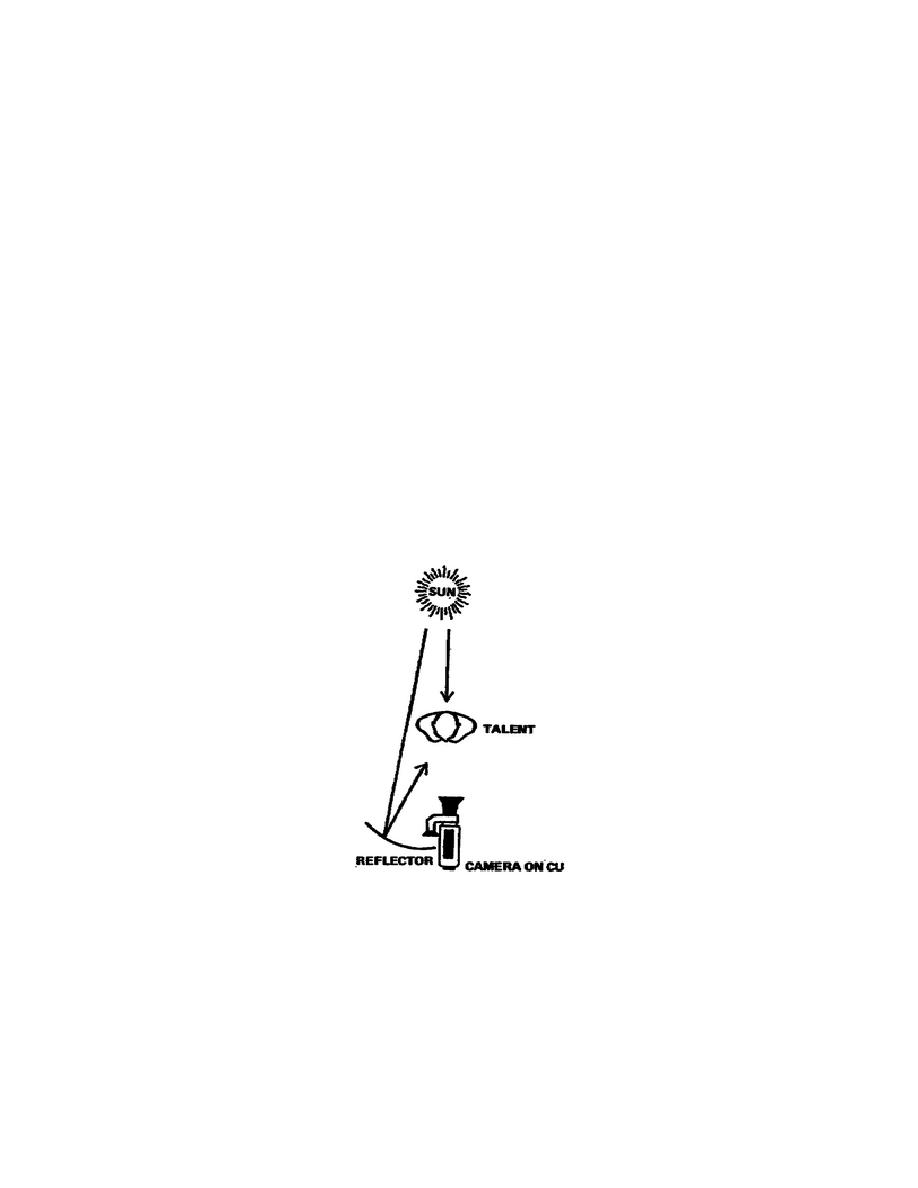
2. When shooting outdoors, the primary source of illumination is the sun.
Even though we have no direct control over the sun, there are ways to make it
work to our advantage.
The sun's illumination can also be supplemented by
using special lighting instruments and accessories.
3. The ideal light for shooting outdoors is an overcast day. The clouds act
as diffusers for the hard, directional sunlight, providing an even
illumination.
Because the diffused light of an overcast day creates rather
soft shadows and therefore slow falloff, shadows are not usually a problem.
However, try not to position a person in front of a white or otherwise bright
background.
The auto-iris of the camera will read and adjust to the bright
background rather than the person.
Consequently, the person will be
underexposed and appear as a silhouette in front of the properly exposed
background.
4. Most outdoor lighting problems occur on bright, sunny days. During this
type of day, the sunlight is highly directional and produces dense shadows
(fast falloff).
Here are some helpful hints of how to "shoot" in bright
sunlight.
a. Whenever possible, shoot with the sun, not into it. That is, the sun
should be in the camera operator's rear.
If you shoot against the sun
(backlit), the auto-iris in the camera lens will expose about two stops under
the proper exposure causing the subject to be underexposed. If you must shoot
your subject backlit, try to get as close a shot as possible and use a
reflector to bounce as much light on your subject as possible (fig 3-1).
Figure 3-1.
Shooting backlit
b.
In bright sunlight, the problem of bright backgrounds is more severe
than in
the diffused light of an overcast day. Again, try to avoid shooting
against
a bright, sunlit background.
Even if the camera is on manual iris
control
and is adjusted for this foreground figure, the bright background will
29


 Previous Page
Previous Page
